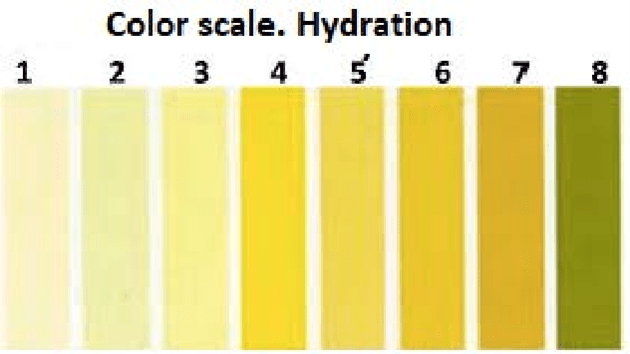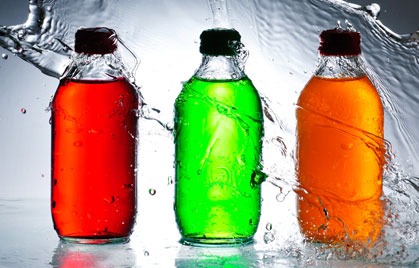Many products on the market claim to elevate hydration better than their competitors. Hydration, once thought to be as simple as drinking water when you’re thirsty, can feel anything but simple when faced with a variety of complicated products. We’ve broken down the basics to help athletes best hydrate for peak performance.
How Do I Know When I’m Dehydrated?
Hypohydration, or reduced total body water, is known to negatively affect strength by 2%, power by 3%, and endurance by 10% (Judelson et al., 2007). Maintaining proper hydration, especially in the hotter months, is critical to ensuring an athlete can perform at the highest level possible.
There are several sophisticated ways to monitor hydration in a clinical setting, but for individual athletes looking for a simple, day-to-day monitoring method, it’s true that periodically looking at urine color is a reliable method to quickly determine hydration status throughout the day. Researcher Lawrence Armstrong developed an eight-point urine color scale that can be used in adults, children, and pregnant and breastfeeding women (Armstrong et al., 1998). Athletes should aim to keep their urine below shade four on the eight point scale shown below at most points during the day, and especially on days when training or competing.

How Much Fluid Should I Drink?
Recommended amounts of fluid intake vary based on height, weight, age, and activity level, so athletes can generally let their thirst and their urine color guide the amount they’re drinking. If you’re not sure if you’re drinking enough water, but your urine color is consistently below shade four, you’re probably in the clear. If the color is consistently at or above shade four, you may want to consider increasing your total water and fluid intake throughout the day.
Recommendations vary, but the general consensus for athletes is to avoid fluid losses of greater than 2% of body weight during exercise (Orrù et al., 2018). For a 150 pound athlete, this would be three pounds. Fluid loss can vary based on a variety of factors such as sweat rate, temperature, humidity, and intensity of exercise. You can figure out how much fluid you lose by weighing yourself before training, training for one hour, and weighing again after training is completed. Essentially, one pound of weight loss would be equivalent to a loss of 16 ounces of fluid. This ratio can be helpful in determining how much fluid per hour is needed during training in order to avoid excessive fluid losses and maintain the ability to produce sweat and cool the body.
What Should I Drink?
Many athletes ask, ‘Is drinking water really the best method of hydrating, or should I be consuming some kind of sports drink?’
When we’re thinking about day-to-day hydration, meaning when athletes are not exercising or preparing to exercise, the majority of their fluid intake should be from water, as well as the water found in solid foods such as fruits and vegetables (Orrù et al., 2018). Other beverages such as coffee and tea do aid in hydration, but a good rule of thumb is to primarily hydrate with water, and to support that hydration with other beverages for taste and enjoyment. Athletes may also opt to add electrolyte tablets to beverages during the day during the warmer months, or if they notice these additions encourage increased fluid consumption overall.
 Before and during exercise, water may not be sufficient to ensure proper hydration. With excessive sweat loss comes excessive sodium loss, and rehydrating with only water can lead to insufficient amounts of sodium in the blood. For this reason, when exercise exceeds about 60 minutes and is above moderate intensity (difficulty speaking while exercising), athletes should choose drinks that have around 200mg of sodium per 8 ounces (Benardot, 2012). Most sports drinks will provide more than this. When choosing a sports drink, choose one that has the most appealing taste since you’re more likely to consume adequate fluids while exercising if you enjoy the taste. A small amount of sugar in sports drinks will also aid in the absorption of fluids. Drinks containing about 7% carbohydrate will assist in total fluid absorption without causing excess strain on the GI tract. This amounts to about ~17 grams of sugar per 8 ounces of fluid.
Before and during exercise, water may not be sufficient to ensure proper hydration. With excessive sweat loss comes excessive sodium loss, and rehydrating with only water can lead to insufficient amounts of sodium in the blood. For this reason, when exercise exceeds about 60 minutes and is above moderate intensity (difficulty speaking while exercising), athletes should choose drinks that have around 200mg of sodium per 8 ounces (Benardot, 2012). Most sports drinks will provide more than this. When choosing a sports drink, choose one that has the most appealing taste since you’re more likely to consume adequate fluids while exercising if you enjoy the taste. A small amount of sugar in sports drinks will also aid in the absorption of fluids. Drinks containing about 7% carbohydrate will assist in total fluid absorption without causing excess strain on the GI tract. This amounts to about ~17 grams of sugar per 8 ounces of fluid.
In summary, water is sufficient for hydration outside of exercise, but while exercising (especially in hot environments and for long periods), athletes may benefit from adding fluids with sodium and a small amount of carbohydrate in the amounts described above.
References
Armstrong, L. E., Soto, J. A., Hacker, F. T., Casa, D. J., Kavouras, S. A., & Maresh, C. M. (1998). Urinary indices during dehydration, exercise, and rehydration. International Journal of Sport Nutrition, 8(4), 345–355. https://doi.org/10.1123/ijsn.8.4.345
Benardot, D. (2012). Advanced Sports Nutrition. Human Kinetics.
Judelson, D. A., Maresh, C. M., Anderson, J. M., Armstrong, L. E., Casa, D. J., Kraemer, W. J., & Volek, J. S. (2007). Hydration and Muscular Performance. Sports Medicine, 37(10), 907–921. https://doi.org/10.2165/00007256-200737100-00006
Orrù, S., Imperlini, E., Nigro, E., Alfieri, A., Cevenini, A., Polito, R., Daniele, A., Buono, P., & Mancini, A. (2018). Role of Functional Beverages on Sport Performance and Recovery. Nutrients, 10(10), Article 10. https://doi.org/10.3390/nu10101470
Read more Spirit of Sport blog posts



